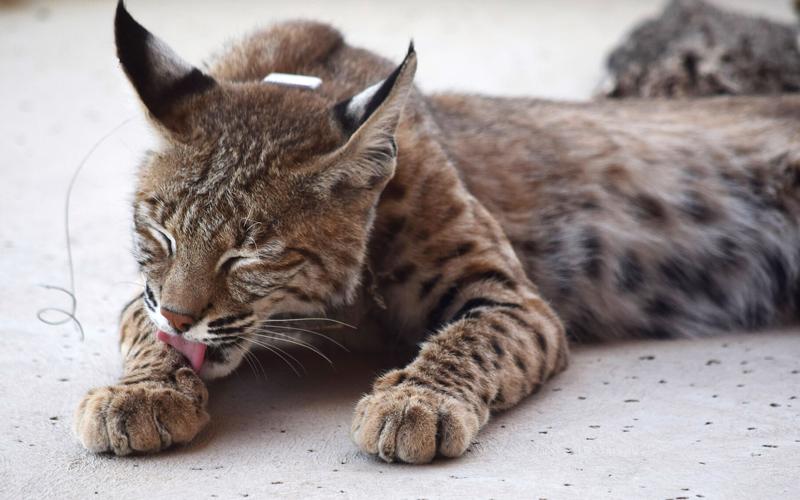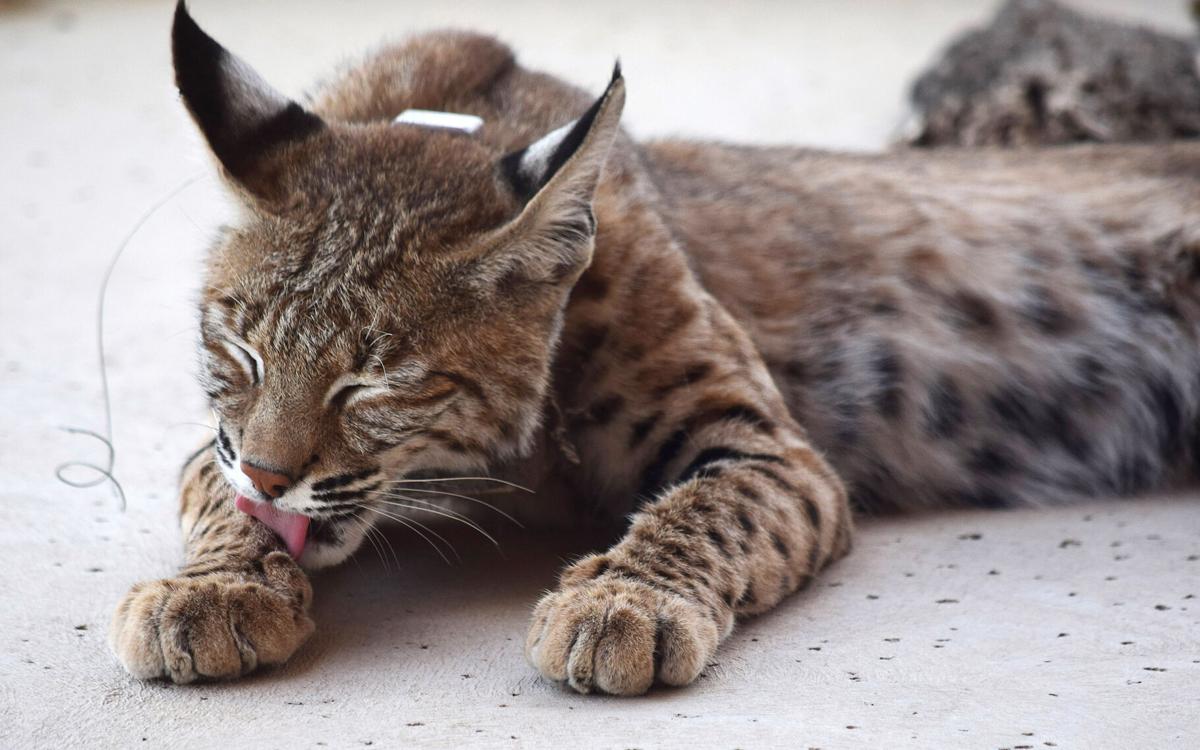A bobcat wearing a radio collar was shot and killed in a west side neighborhood last week, and state wildlife officials want to know why.
The Arizona Game and Fish Department is asking the public for information about the shooting, which is believed to have happened sometime between 5 a.m. and 8:45 a.m. on Sept. 28.
The female bobcat, nicknamed Sadie, was found dead between North Whispering Bell Drive and North Painted Hills Road, near North Ironwood Hill Drive, after its tracking collar sent out a mortality signal.
Anyone with information is asked to call the Game and Fish tip line at 1-800-352-0700.
The cat was part of the Bobcats in Tucson Research Project, which has a collection permit from Game and Fish to study the life cycle of the animals along the urban fringes of the city.
“I have no idea why someone would have shot Sadie. She was in a subdivision,” said Cheryl Mollohan, the wildlife biologist heading up the study.
A bobcat, named Sadie by researchers, drinks from a backyard fountain in Tucson in July, about two months before she was shot dead.
The cat weighed less than 15 pounds when she was trapped and fitted with a collar in January. Since then, she paid frequent visits to at least two different homes in the neighborhood, where enthusiastic residents snapped pictures of her and provided the research team with regular updates.
Mollohan said Sadie was probably about 3 to 5 years old and had produced at least two litters of kittens.
Three days after she turned up dead, another cat from the study, a male called Jonathan, was shot and killed near West Starr Pass Boulevard and North Shannon Road by a resident who said the cat was stalking his chickens.
A different male, nicknamed Dave, met a similar fate in 2021: shot dead by a Menlo Park homeowner after allegedly feeding on the man’s chickens.
According to Game and Fish spokesman Mark Hart, the agency issued no citations in either of those cases because nothing illegal was done. “Under state law, taking a bobcat that causes property damage is legal,” Hart said.

An adult female bobcat, nicknamed Sadie by researchers, lies dead in a west side neighborhood after being shot. The Arizona Game and Fish Department is seeking information on the killing.
Out of the 25 cats collared by researchers since November 2020, eight have now died.
Three bobcats were run over in the road and one died two days after it was captured and released, possibly from what wildlife biologists call “capture myopathy,” though a necropsy found no clear cause of death.
The rest were intentionally killed by people, including one cat, Catherine, that was found mutilated and partially buried south of Sweetwater Preserve in a way that could only have been done by a person.
Mollohan said that when she launched the research project, she predicted the main cause of death “overwhelmingly would be vehicle strikes, but here we are with four of them dead from gunshots.”
“We’ve had no natural mortality of any of our bobcats so far. It’s all been human related,” she said.
Researchers continue to track the movements of the 13 collared cats that remain. The animals are scattered throughout the desert and subdivisions between the Tucson Mountains and Santa Cruz River.

Bobcat Sadie carries a baby rabbit she just caught through the desert in a west side neighborhood earlier this year.
Mollohan said the project has received $85,000 in grants and private donations to continue and expand its work for at least another year.
They hope to begin trapping bobcats again in November with the goal of getting tracking collars on as many 25 of the animals.
Despite recent events, Mollohan still thinks of Tucson as a place that welcomes and celebrates its wildlife.
Human conflicts with bobcats are rare, she said, and they can be reduced even further by securing chickens in a sturdy coup, keeping small dogs contained and not allowing house cats to roam outside.
“Cats are the most highly evolved of the carnivores,” Mollohan said, but they “do not recognize property or other artificial boundaries that humans create.”
“Since we placed prey such as chickens in their path, it is our responsibility to make adjustments because they cannot,” she said.









